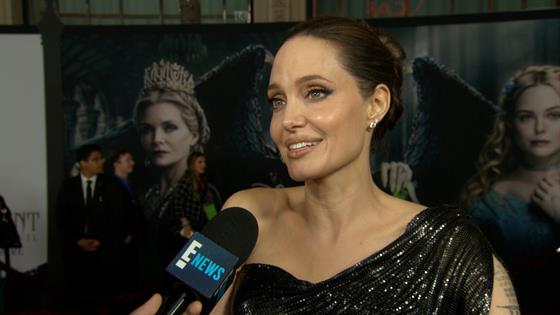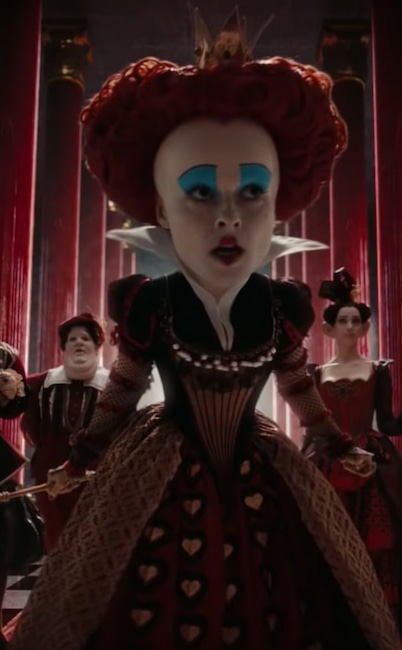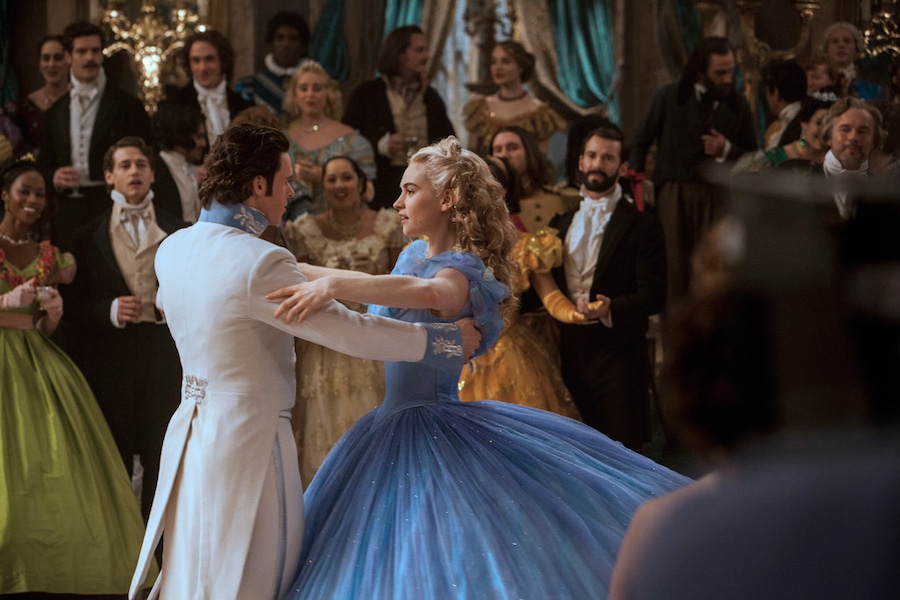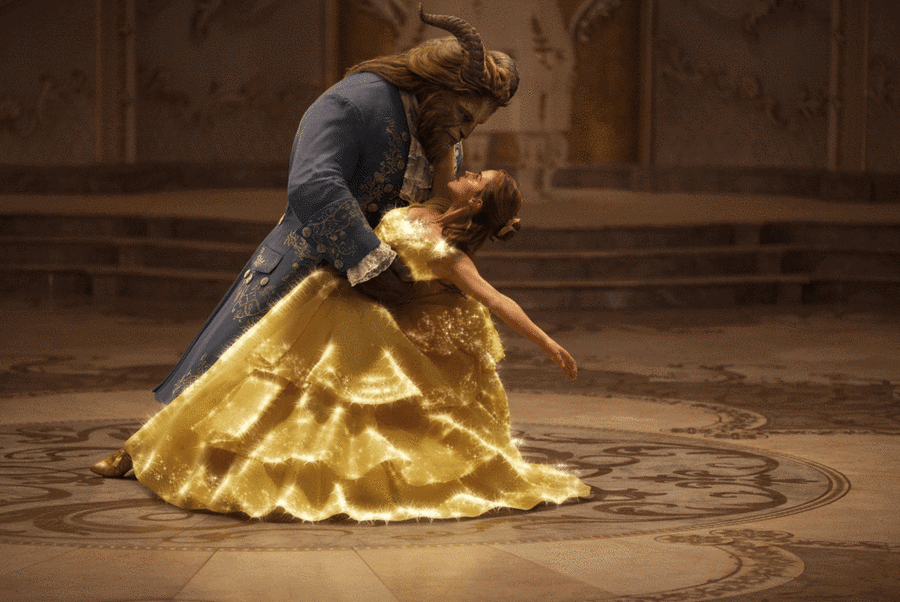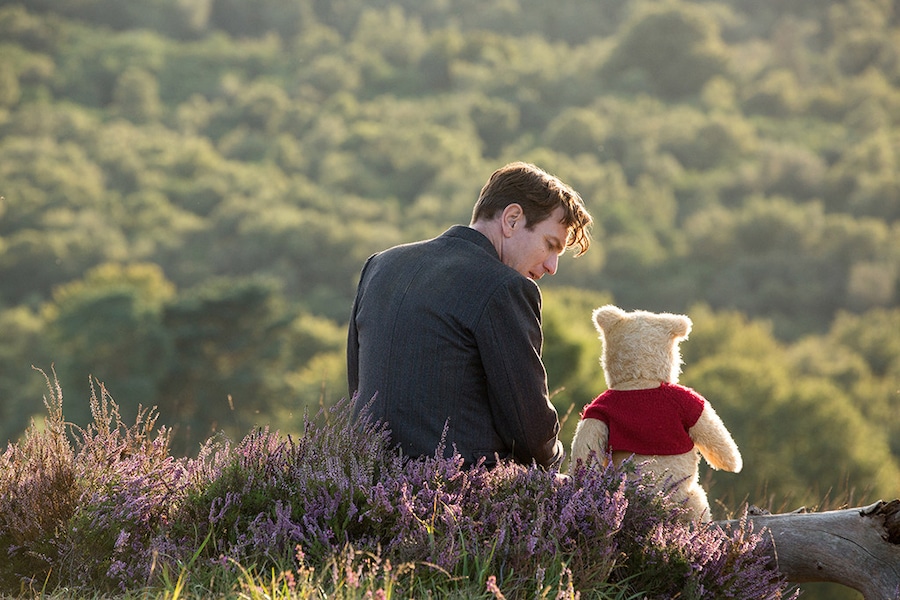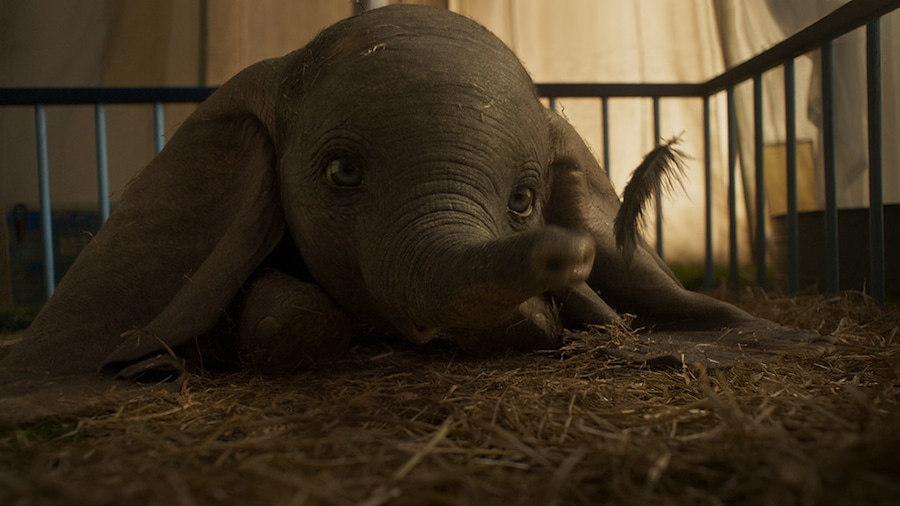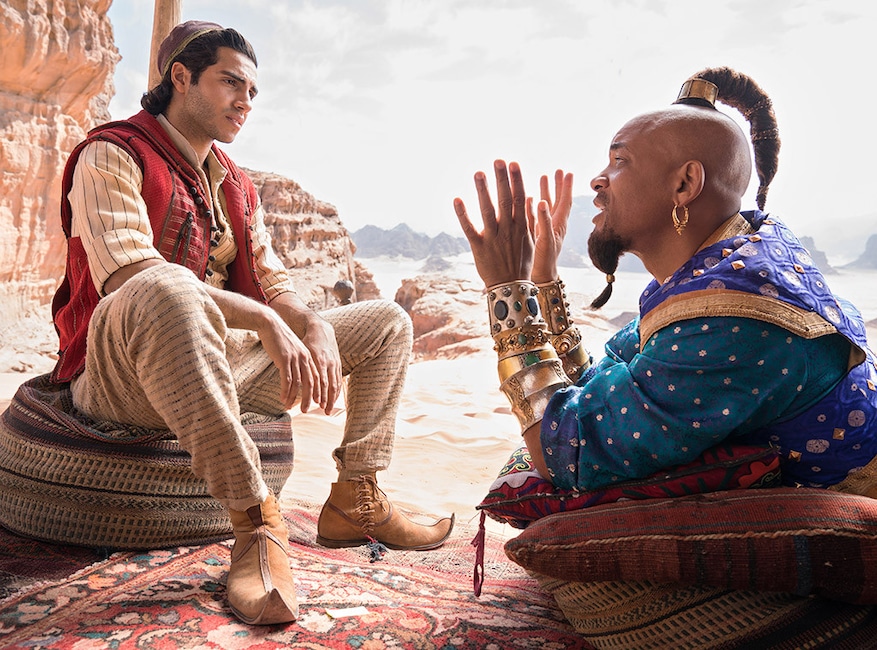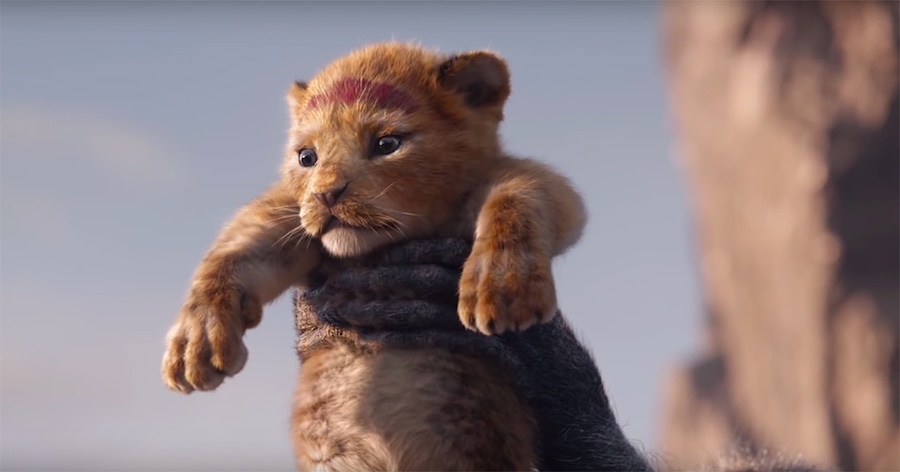An abused elephant with oversized ears joyously takes flight.
A kitchen comes to life, each piece of hardware and furniture bursting into song.
A street urchin and a princess soar through the clouds on an enchanted rug.
A lion cub is foisted into the air, as all the jungle’s creatures bow in deference.
For a generation of moviegoers, there’s little doubt that each of those sentences conjures up some intense feelings as the moments described, each from a classic Disney animated film, begin to play back in their minds, perfectly recalled from memory. You can almost hear the songs now, can’t you? The nostalgia, as they say, is real.
And that’s something that Walt Disney Pictures—the live-action production subsidiary of Walt Disney Studios—has been banking on since Tim Burton‘s 2010 live-action adaptation of Alice in Wonderland. Since that film arrived in theaters to become the fifth-highest-grossing film of all time with a worldwide gross over over $1 billion—it’s since been unseated in ranking and now hovers at the 40th-highest-grossing, not adjusted for inflation, highlighting just how strong the box office has been in the last decade—Disney has employed a strategy of mining its own beloved and deep bench of animated classics for live-action adaptations with bonkers budgets. And with the October 18 release of Maleficent: Mistress of Evil, we’re finally finished with 2019’s planned release of four live-action films that are either direct adaptations of classics or, as is the case with this week’s release, a sequel to an earlier adaptation.
It’s a business decision that flies directly in the face of Walt Disney‘s own edict on the prospect of returning to familiar territory, with the legendary innovator reportedly responding to requests for sequels for his wildly successful 1933 animated short “Three Little Pigs” by declaring, “You can’t top pigs with pigs.” (He would eventually relent and produce sequels, though their moderate levels of success only furthered his resolve to pursue new artistic risks over retreads.) And it certainly ignores former Walt Disney Studios chairman Jeffrey Katzenberg‘s 1991 decree about the pursuit of original ideas. “People don’t want to see what they’ve already seen,” he wrote in a 28-page memo to colleagues. “Our job is not to count on recycled formulas, but to create and develop fresh, new stories.”
And yet, it’s a winning strategy that’s entirely in step with our reboot and revival-crazed, nostalgia-obsessed times. With more entertainment being made now than ever before, it can be hard to cut through the clutter. When your project is a property that people are already familiar with, it can help. When that property is a practically universally beloved entry in the Disney Animation vault, it’s the key to billions.
Disney / E! Illustration
When CEO Bob Iger appointed Sean Bailey to president of Walt Disney Pictures in 2010, followed by the appointment of Alan Horn as Walt Disney Studios’ chairman in 2012, the path to building up the Mouse House’s live-action production slate became clear. “We thought if Iron Man and Thor and Captain America are Marvel superheroes, then maybe Alice, Cinderella, Mowgli, and Belle are our superheroes, and Cruella and Maleficent are our supervillains,” Bailey told Vulture in 2017. “Maybe if there’s a way to reconnect with that affinity for what those characters mean to people in a way that gets the best talent and uses the best technology, that could become something really exciting. It feels very Disney, playing to the competitive advantages of this label.”
There appears to be no end in sight for Disney’s plans to mine their existing IP in this way—after this year’s four releases, which also included March’s Dumbo and to Aladdin, to much anticipation from nostalgic millennials across the globe, there are adaptations of Mulan, Lady and the Tramp, Lilo & Stitch, and The Little Mermaid, all in varied stages of development, on the way in 2020 and beyond—not at least until they work their way through all 56 canonical animated classics and run out of original material to reproduce.
Back in 2017, Bailey told Vulture that the studio’s line in the sand, as it were, on which films in the library were ready for adaptation and which were too fresh was around the year 2000. “We’re not looking at anything very recent, [anything] that still feels like it’s still the provenance of current Disney animation,” he told the outlet. Though, the 2018 announcement of Lilo & Stitch‘s adaptation seems to calls that into question. (The film was released in 2002.)
At any rate, Bailey doesn’t seem to want to limit the studio in terms of what’s up for adaptation grabs and what’s not. When asked by The Hollywood Reporter in December 2018 how deep into its library Disney was willing to go, he told the trade publication he wasn’t sure. “I don’t know, because we might hear something that excites us,” he said. “Take Maleficent. She was a character who cursed a baby because she didn’t get an invitation to a party, and we thought, ‘This is interesting.’ We made a movie, and now we are making another movie. We will continue to play around in ways that I hope are interesting and unexpected.”
And if the money continues to pour in, why not? Since Alice in 2010, the 11 live-action adaptations to be released by Disney have grossed over $7 billion combined worldwide. For a breakdown of each film’s successes, read on!
YouTube
Alice in Wonderland
A Rotten Tomatoes score of only 51 percent positive reviews didn’t stop Burton’s visual feast, which starred Mia Wasikowska as the titular heroine, Johnny Depp as the Mad Hatter, and Helena Bonham Carter as the Red Queen, from raking in over $1 billion worldwide in 2010. Not only did audiences throw money at the film, but they also awarded it an A- CinemaScore. A sequel was formally announced in late 2012. As you’ll see later in this list, it didn’t fare as well.
Walt Disney Studios
Maleficent
In 2014, Disney turned the Sleeping Beauty story on its head to tell the tale from the point of view of Maleficent, its iconic villain. Starring Angelina Jolie in the titular role and Elle Fanning as Aurora, the film only notched a 54 percent rating at Rotten Tomatoes, but earned an A from audiences, according to CinemaScore. With worldwide grosses over $758 million, it became Jolie’s highest-grossing film ever and the fourth-highest-grossing film of 2014. A sequel, Maleficent: Mistress of Evil, will hit theaters on October 18, 2019.
Disney
Cinderella
The next Disney classic to get the live-action treatment was Cinderella in 2015. Directed by Kenneth Branagh, the film starred Lily James in the titular role, with Richard Madden as her prince, Helena Bonham Carter as her fairy godmother, and Cate Blanchett as her evil stepmother Lady Tremaine. It’s the first of Disney’s adaptations this decade to crack 80 percent at Rotten Tomatoes—with a score of 84 percent, to be exact—though it also marked the weakest box office, with a worldwide gross of $543.5 million. Audiences loved the adaptation, though, earning it an A from CinemaScore.
Article continues below
Disney
The Jungle Book
Disney took on a massive undertaking for their next adaptation, choosing to bring The Jungle Book to life in 2016. The studio entrusted actor-director Jon Favreau to helm the film, which starred young newcomer Neel Sethi as Mowgli and featured the voice and motion capture performances of Bill Murray, Ben Kingsley, Idris Elba, Lupita Nyong’o, Scarlett Johansson, Giancarlo Esposito, and Christopher Walken as Baloo, Bagherra, Shere Khan, Raksha, Kaa, Akela, and King Louie, respectively. Critics and audiences fell for the movie hard, giving it 95 percent on Rotten Tomatoes and an A from CinemaScore, respectively. The film fell just short of a billion, earning $966.5 million worldwide. A sequel is in the works, but was put on hold until Favreau could finish this year’s adaptation of The Lion King, which utilizes the same technology to bring the animal kingdom to life.
Walt Disney Studios
Alice Through the Looking Glass
Disney’s return to Wonderland in 2016—with James Bobin subbing in for Burton as director—was not as magical as its first visit. Critics dogged the sequel, earning it a 30 percent rating at Rotten Tomatoes, and, despite an A- CinemaScore rating, the box office returns dropped precipitously when compared to its predecessor. Earning $299.4 million on a budget of $170 million, it’s feels weird to label the sequel a disappointment, but compared to all that had come before, it sure was. Could the six years between releases have been to blame?
Disney
Pete’s Dragon
Disney’s third live-action adaptation to be released in 2016 was this reimagining of a lesser-known live-action/animated hybrid from 1977 of the same name. Starring Bryce Dallas Howard and Robert Redford, the story of an orphaned feral boy who befriends a dragon in the Pacific Northwest charmed critics, earning it an approval rating of 88 percent at Rotten Tomatoes and a CimeaScore grade of A. Pete’s Dragon grossed $144 million against a $65 million budget, making it a modest success.
Article continues below
Walt Disney Studios Motion Pictures
Beauty and the Beast
The crown jewel of Disney’s live-action adaptations, Beauty and the Beast was an unbelievable success. The musical, directed by Bill Condon and starring Emma Watson and Dan Stevens as the titular characters, grossed over $1.2 billion worldwide, becoming the highest-grossing live-action musical of all time and the 14th-highest-grossing film ever. While critics only gave it a 71 percent score at Rotten Tomatoes, audiences clearly loved it, earning it an A from CinemaScore.
Laurie Sparham/Walt Disney Enterprises, Inc.
Christopher Robin
This adorable little adaptation of the Winnie the Pooh franchise, which starred Ewan McGregor as the grown version of the titular character who’d lost his sense of imagination, only to be reunited with all his old stuffed friends, was a modest success for the studio. It grossed $197.2 million worldwide on a budget of $70 million, earning an A from CinemaScore. Critics were slightly less enthusiastic, landing Christopher Robin a 72 percent score on Rotten Tomatoes.
Disney Enterprises, Inc.
Dumbo
Released in late March 2019, this adaptation of the beloved 1941 animated film centered on a young elephant with extremely large ears and extremely sad eyes separated from his mother and forced into becoming a circus performer thanks to his astounding ability of flight saw director Tim Burton return to the Disney fold nearly a decade after helping kick off the Mouse House’s live adaptation craze—to diminishing effects. To date, the film has grossed $347 million worldwide, which, while nothing to sniff at, definitely falls short of projected earnings. The film, which starred Danny DeVito, Colin Farrell, Eva Green and Michael Keaton, didn’t exactly win critics over, notching only a 47 percent rating at Rotten Tomatoes. Audiences were a bit kinder, awarding it an average grade of A-, according to CinemaScore.
Article continues below
Walt Disney Studios
Aladdin
This adaptation of the 1992 animated classic centered on the titular street urchin who, along with the help of a wish-granting Genie and a magic carpet, wins the heart of princess Jasmine and defeats the wicked Jafar, is an absolute box office smash. Released on May 24, 2019, the film has already grossed over #1 billion worldwide, becoming the sixth highest-grossing film of the year and the highest grossing film of star Will Smith‘s career. Critics weren’t so taken with director Guy Ritchie‘s vision for the film, earning it an approval rating of 57 percent on Rotten Tomatoes. Audiences, however, were a bit more smitten, giving the film an average grade of A, according to CinemaScore.
Disney
The Lion King
Though its photo-realistic digital animation hardly counts as “live action,” Jon Favreau‘s adaptation of the beloved 1994 animated classic set in the Pride Lands of Africa, with Donald Glover and Beyonce providing the voices for Simba and Nala, was perhaps the year’s most anticipated of all of Disney’s releases. And the box office receipts prove it. Since its release on July 19, 2019, the film has grossed over $1.6 billion worldwide, ranking as the second highest-grossing film of the year and the seventh-highest of all-time, surpassing Frozen as the highest-grossing animated film ever. Critics were mixed on the film, earning it an approval rating of 53 percent on Rotten Tomatoes, while audiences were more smitten. It earned an average grade of A, according to CinemaScore.
Maleficent: Mistress of Evil is in theaters now.
(This story was originally published on Friday, March 29, 2019 at 3 a.m. PST.)
Source: Read Full Article
